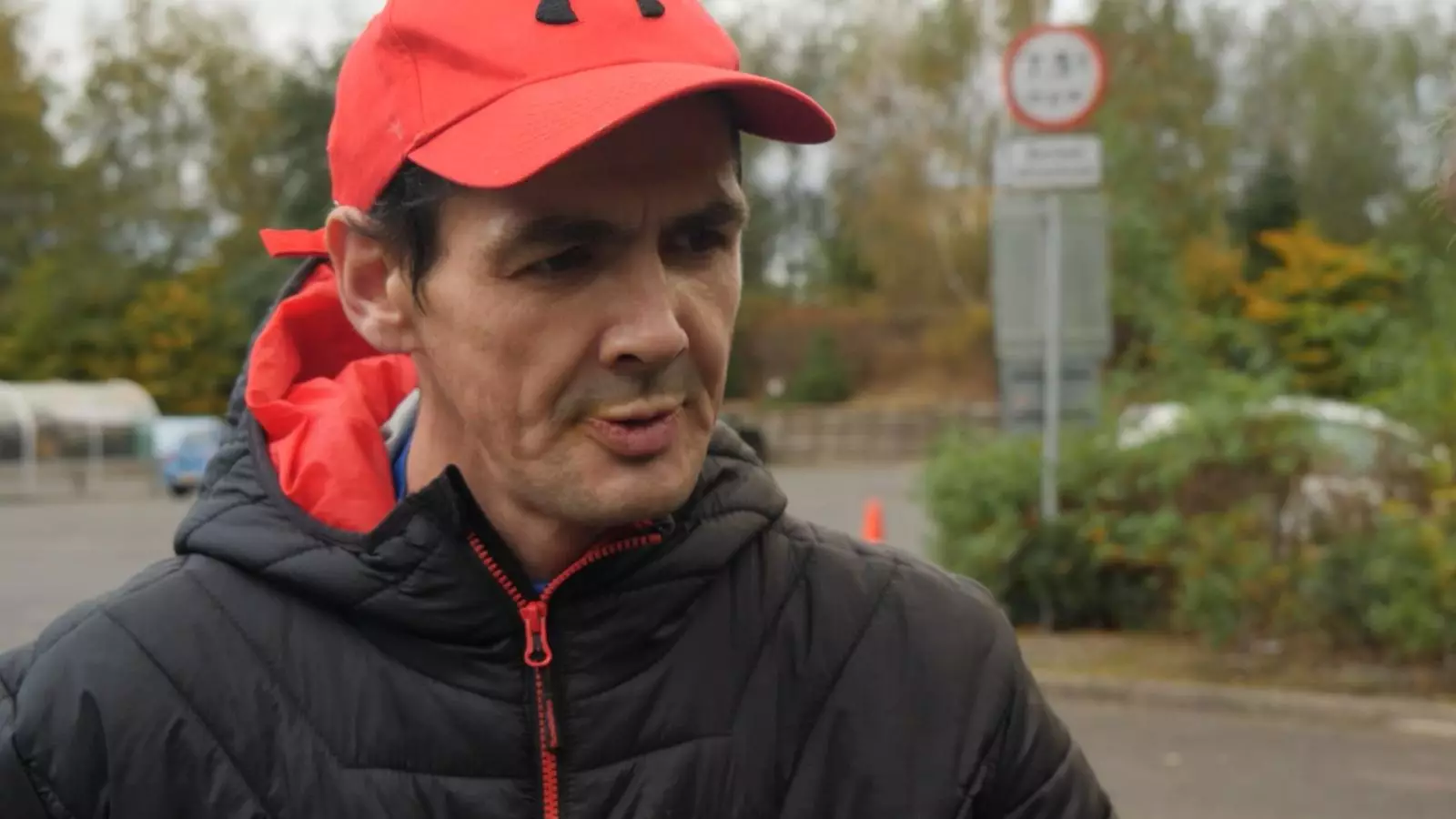On a frigid morning in east Glasgow, the stark reality of drug addiction unfolds through the eyes of Chris, a man entrenched in a life of heart-wrenching dependency and despair. With his heart racing in anticipation, Chris is on a high-stakes mission to score his next dose. His casual bravado masks an undercurrent of desperation as he brandishes a filled syringe in public, drawing attention as he declares, “20ml of heroin for £10.” This routine of acquiring drugs—an alarming 10-minute feat—hints at a systemic failure to stem the tide of addiction that has plagued this community for nearly two decades, initiated for Chris at a time of profound trauma: the murder of his mother in 2007.
Chris is a former painter and decorator, but now, his identity is irrevocably intertwined with his addiction. His struggle transcends personal decline; it symbolizes a broader social crisis that Glasgow faces. The construction of a “safer drug consumption room” by local authorities may signal an innovative attempt to combat drug-related deaths, which have surged alarmingly in recent years. As Chris seeks refuge in a makeshift den hidden away in a supermarket car park, surrounded by the remnants of others’ despair—bloodied needles and discarded paraphernalia—a disturbing reality of addiction sets in: the boundaries between life and death blur unpredictably.
Chris’s journey into the world of substance abuse is marked by harrowing decisions and dangerously tempting risks. As he situates himself on a filthy jerry can, he reveals the conflicts inherent in his actions. Describing his circumstances, he states, “It’s really disgusting, having to do this,” providing a glimpse into his awareness of the indignity his habits impose. His hesitation while searching for a suitable vein on his distressed body is suffused with a desperate urgency, a struggle fueled by the drug’s promise of relief from physical and emotional pain.
This moment encapsulates a larger phenomenon in Glasgow, where a rising number of people find themselves drawn into the depths of addiction. The heart-wrenching irony of Chris’s situation is that, even in the face of severe health risks, he’s prepared to take the plunge; the fear of his surroundings and the potential for infection do not register in comparison to the overwhelming need to numb his pain. As Chris injects the heroin, silence encapsulates him, a fleeting moment in which he seeks solace in the very substance that has contributed to his current plight.
Just a stone’s throw away lies hope in the form of a new government initiative: a safe space for individuals like Chris to use narcotics under medical supervision. With Scotland grappling with the highest drug-related death rates in Europe—1,172 lives lost to addiction in a single year—the urgency for innovative solutions has never been greater. Local authorities aim to bring individuals off the streets and into sterile environments where they can use their substances with reduced risk and better access to healthcare services.
Yet, Chris remains skeptical. He voices a common sentiment among those mired in addiction: a palpable distrust of governmental intentions. “I think if you’re in that area? Yes,” he concedes before expressing his doubts about the scheme’s perceived sincerity. Many like Chris view such initiatives as machinations of a system that fails to truly understand the complexities of addiction. Deep-seated mistrust emanates from years of broken promises and systemic failures, motivating the question: Can a government-run facility truly offer a way out?
The implementation of safe drug consumption spaces is controversial, attracting polarized opinions on both ends of the political spectrum. While some see it as a critical step toward harm reduction and potentially saving lives, critics argue that such measures may inadvertently condone substance abuse and detract from more traditional, treatment-centric approaches. With public health budgets under constant strain, spending on these initiatives raises questions about resource allocation: should efforts be directed toward prevention and rehabilitation instead of legitimizing drug use spaces?
As local and national authorities deliberate over funding and effectiveness, the backdrop of rising drug-related casualties looms large. In the span of seven years since the concept of safer consumption rooms emerged, societal attitudes toward addiction continue to evolve amidst ongoing tragedies. However, for individuals already entrenched in addiction, time may be running out, leaving one question at the forefront: is a safer consumption room a bridge toward recovery, or merely a band-aid on a festering wound?
In conversation with Chris, the ominous specter of mortality is hardly shied away from. He contemplates the finality of a drug-induced death and expresses a strange yearning for escape, suggesting that, in his desperation, the end may not be the disaster many anticipate. His words reflect a broader existential crisis faced by countless individuals trapped in the throes of addiction—a yearning for relief mixed with a chilling resignation to fate. As Glasgow looks ahead, unfolding its plans to mitigate this crisis, one cannot help but wonder how many more stories like Chris’s will emerge, and whether enough will be done to change the narrative of despair into one of hope and recovery.

Leave a Reply